We put the spotlight on The Daily Aus founders to talk about the success of their social media news platform for young people. There are details about our bespoke 12 month mentorship program for women of colour. Our first reporting on China forum is around the corner, plus we’re working on round two of our research: ‘Who Gets To Tell Australian Stories’?
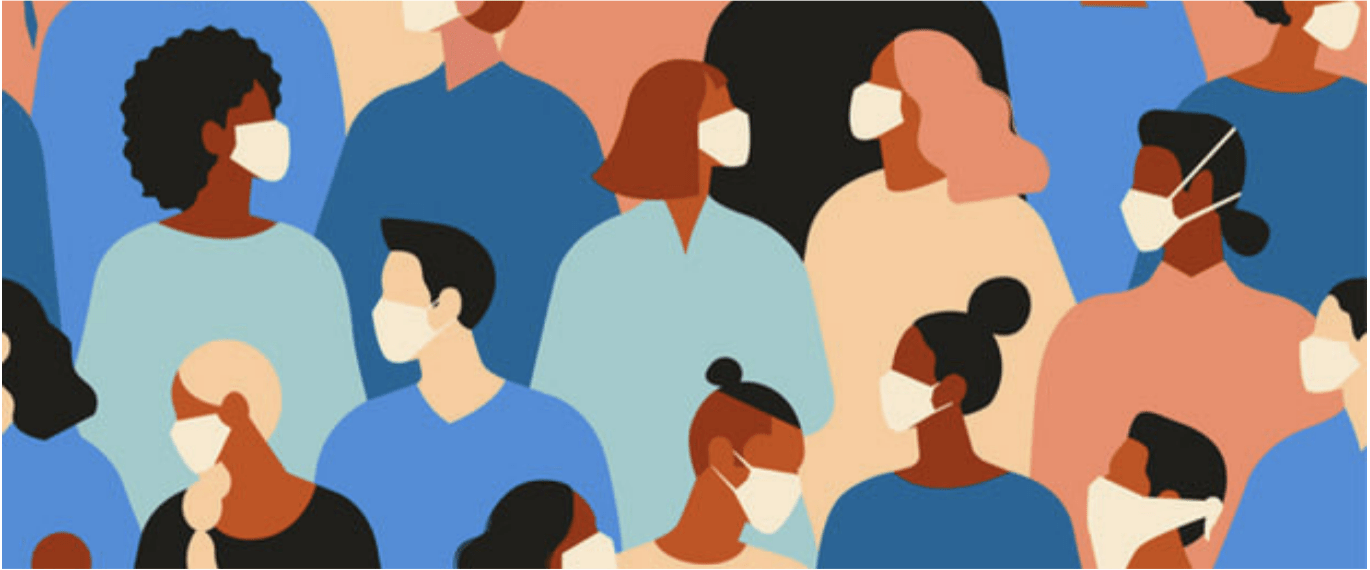
The Daily Aus has quickly become a leading and trusted online news source for a generation of younger Australians. Their fresh approach has earned them 250,000 + followers on Instagram since 2017 with many followers under the age of 35. So what makes The Daily Aus so appealing? What’s next for the media platform’s growing influence? We sat down with the two mavericks.
We think of ourselves as a speed bump that meets our readership where they are. You should be able to scroll on social media, see a photo of a coffee, a brand you like, and then a little, digestible explainer of ours about interest rates before going back to what you’re doing more knowledgeably.
In true The Daily Aus style, we connected digitally first, and met in person after. Sam had the idea for TDA, and put a call out for a partner. We chatted briefly about the idea online before meeting for a coffee in Bondi, where TDA was launched. It’s been four years since then, and not a day has gone by without us speaking to each other.
We’ve both always been massive news nerds. Sam comes from a family of journos and Zara has been a die-hard politico since school. The initial thinking behind launching TDA was we were both a bit sick of being asked by friends about what was happening in the world. We were always the friends who prepped mates before a date or dinner with the in-laws, and so we decided to streamline that process into a single product – TDA
TDA is Australia’s leading social-first news service. We offer young Australians a digestible and engaging way to access the news. Our objective is to provide the context to a news story making the rounds. We recognise that you can’t understand the full story if you’ve never been exposed to the concepts or main characters, so we plug that hole by providing explainers and breaking down the news
TDA focuses on stories that matter to young people in Australia. We take the time to bring our readers along on the journey of understanding an issue from its origins to now. The explainer pieces we do aren’t always sexy topics (we’re looking at you, tax reform), but they’re important to know as the next generation of voters mature and understand their place in the world.
We are meeting young people where they’re at. We’re not trying to change or modify information consumption habits, but instead ensuring that in between all that scrolling, our audience gets the opportunity to read something educational and interesting. We also think it’s become popular because as young people ourselves, we know how to communicate effectively to our peers
It’s really hard for us to comment on the ethnic or racial diversity of our audience, as that’s not something we’ve asked the audience about and at the moment we’re still beholden to Instagram analytics. That said, we know our audience is mostly female, and mostly under the age of 30. We know we are speaking to a demographic that’s labelled ‘hard to reach’ by traditional media – and that’s what makes what we’re doing so exciting. In terms of geography, we know most of our readers are in Sydney or Melbourne – the two cities that have also consumed the most COVID-19 news and press conferences. In the next two years, we’d really like to be speaking to more regional users – that’s a big focus for us going forward.
The conversation about diversity and inclusion really matters to our audience. We try to frame progress in the D&I space as part of our coverage of politics, the law and social issues – not siloed to just ‘good news’. As part of our resolution to ensure that young people have a media they own, it means amplifying diverse young voices – and we do that through taking advantage of the polling tools available on social media to make sure young people feel they are contributing to the news cycle
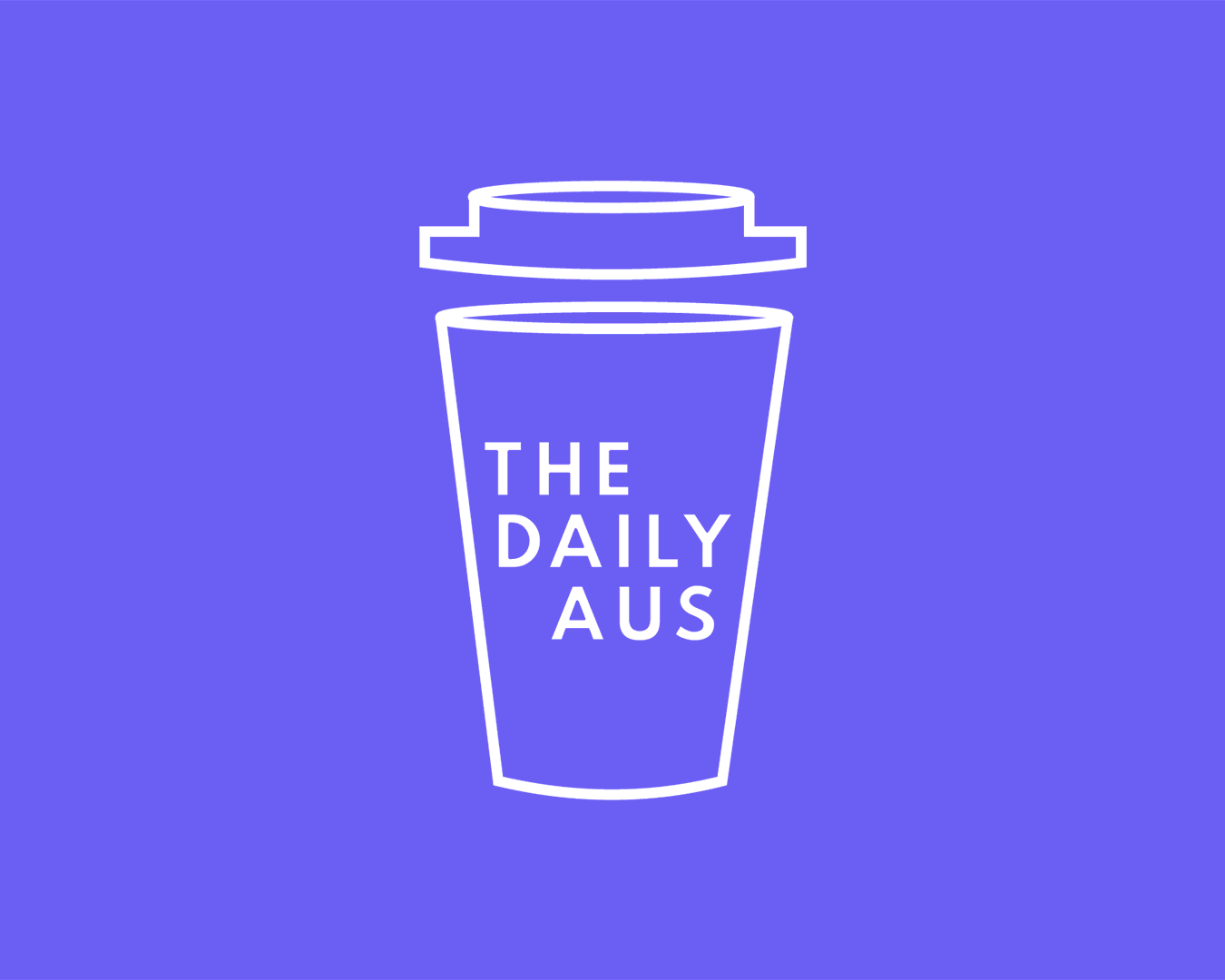
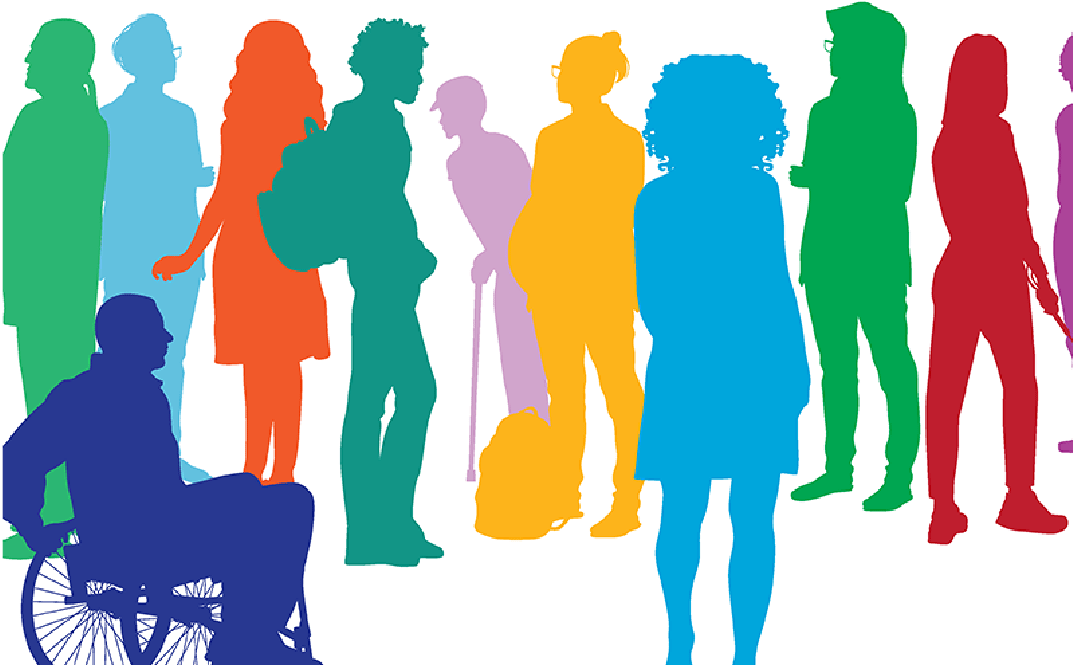
MDA’s 12-month mentorship program will take a dozen mid-career media professionals, from low socio-economic backgrounds and various CALD communities and facilitate pathways towards their dream leadership position. The initiative will formally launch early next year.
Mentees will experience one-on-one mentoring sessions with some of the most influential journalists, news editors and directors in Australia.
Today’s media plays a huge role in shaping our perceptions of each other and the world around us. In 2020 Media Diversity Australia released Who Gets To Tell Australian Stories?
Since then, has there been a significant increase in the representation of diverse people and voices? Ethnic diversity in advertising seems to be at an all-time high, and there does seem to be changes afoot within the belly of the media beasts but have the media’s predominantly Anglo-Celtic male board members decided to shape up or ship out and make room for those of diverse backgrounds? Are diverse staff just interns or big decision-makers? Academic researchers, MDA and our principal partner Google News Initiative will be producing the second iteration of our report.
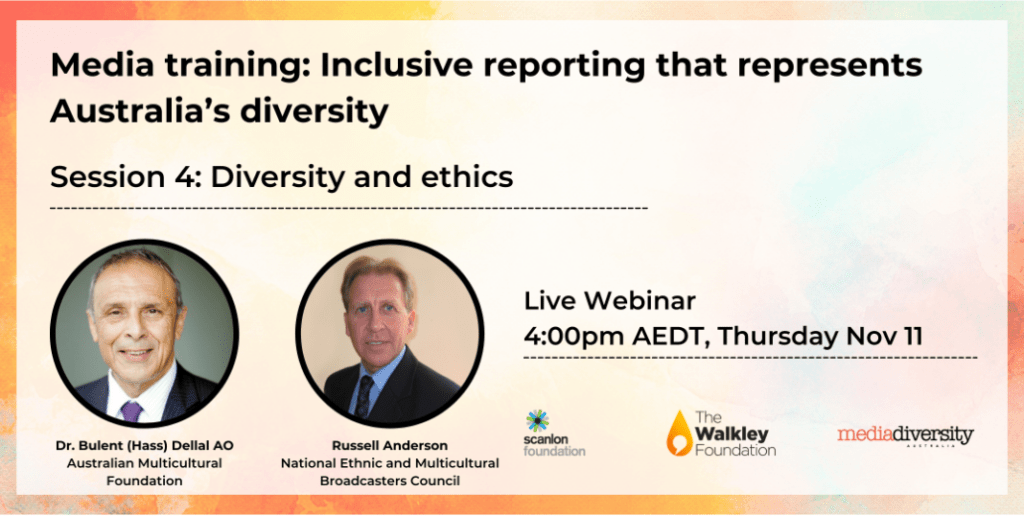
This is the fourth and final session in a series of professional development webinars for Australian journalists to bring greater diversity and inclusion to their reporting, presented by the Walkley Foundation and the Scanlon Foundation. #4 focuses on diversity and ethics, with a conversation between Dr Hass Dellal AO and Russell Anderson.
This event is free; however, spots are limited, and registration is essential to secure your place
Media training: Diversity and ethics
Date: Thursday, November 11
Time: 4pm – 5pm AEDT
To register click here
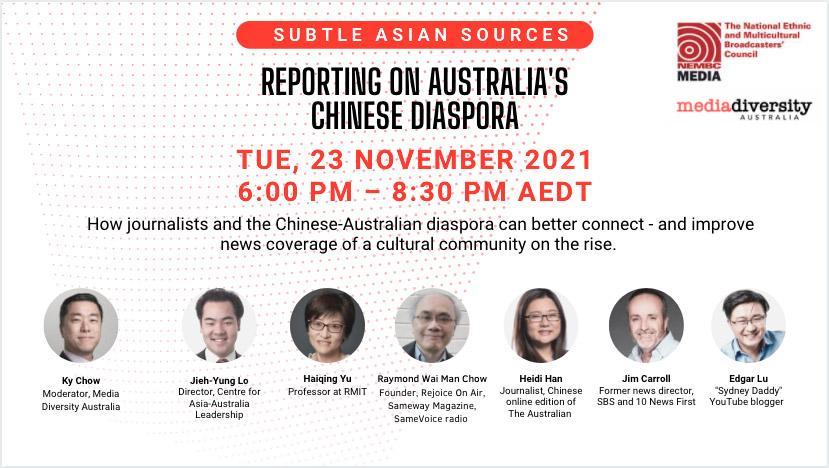
They’re Australia’s largest non-Anglo cultural group, have been here since the Gold Rush and their country of heritage is poised to dominate the world this century. So why is coverage and representation of Chinese Australians so poor in our news media? How can journalists connect better to the Chinese Australian community, which is particularly disengaged from mainstream media even compared to other cultural minorities?
Media Diversity Australia and the National Ethnic and Multicultural Broadcasters’ Council are proud to host this pilot forum event exploring the causes, responsibilities and solutions to Australian newsrooms’ coverage of the Chinese diaspora. Our two sessions will examine both mainstream media’s relationship with the Chinese diaspora, and also what can be learned from the alternative news sources popular with many Chinese in Australia, including social media platforms such as WeChat and YouTube.
Panellists will include Centre for Asia-Australia Leadership director Jieh-Yung Lo, veteran Australian news director Jim Carroll, senior journalist at The Australian Heidi Han, media expert Professor Haiqing Yu from RMIT, Chinese community radio and magazine founder Raymond Chow and Australia-based YouTube Chinese news blogger Edgar Lu. The two sessions will be moderated by MDA’s professional development officer and senior journalist Ky Chow.
Whether you’re a journalist eager to better tap into this important demographic or simply a news consumer keen to see better coverage and learn more about the Chinese Australian diaspora, click here to register for this free Zoom panel.
As a not-for-profit organisation, we rely on the help of our incredible volunteers. With your financial and volunteer support, we can continue to run programs to support culturally and linguistically diverse journalists, conduct agenda-setting research, run networking events, provide practical solutions for the media industry, and much more. If you would like to make a tax-deductible donation to support the vital work we do, please click here.
Media Diversity Australia (MDA) is a national not-for-profit organisation led by journalists and media professionals. Australia is culturally and linguistically diverse, and our media should be too. Established in 2017, MDA has a unique role as a champion of cultural diversity in Australian journalism and news media. We have a vision for a media industry with full and equal participation for culturally diverse people at all levels.
Not everything that is faced can be changed, but nothing can be changed until it is not faced
James Baldwin